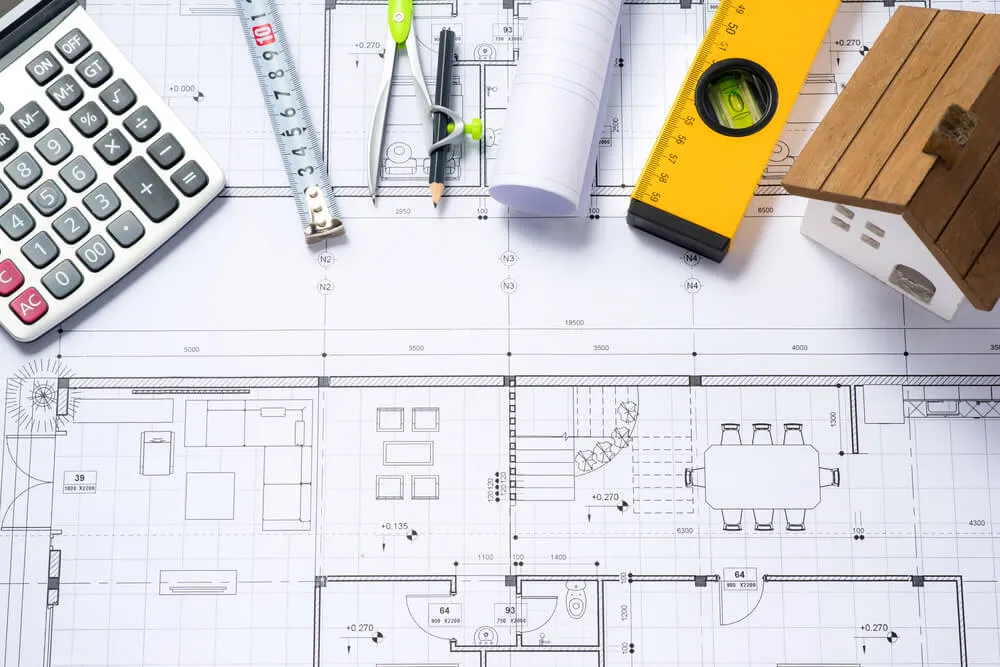Do Quantity Surveyors have a role in Reducing Carbon Emissions?

22nd November, 2020
The amount of embodied carbon pollution produced during the entire life cycle of constructing a building depends on the design and materials utilized. Older buildings were constructed with no consideration for this issue, usually constructed with very little insulation properties and a lack of air tightness throughout. In recent times, this has become and an ever-increasing requirement and focus in building design as it delivers not only an eco-friendlier building, but a much more useable and cost-effective building for the user.
Quantity Surveyors Role in Carbon Efficiency
Quantity Surveyors have a unique role in the design process, one that could potentially be influential to reducing embodied carbon in a building. In value engineering processes the QS has the ability to recommend alternative specifications based on cost, so why not take this further considering products with greater building life cycle ramifications? ‘Whole Life Costing’ has too long been a buzzword in the quantity surveying field, with little to no processes or training in place for this to revolutionize the industry as it should.
Primary items to consider are:
- High-quality insulation is used in crawl spaces, walls, ducts, floors, and attics.
- High Performance windows and doors.
- Renewable sources of the power received to the building.
- SMART systems which automatically regulate temperature, ventilation etc.
These all reduce the requirement for extensive heating and cooling in a building. It is possible in 2020 to create a breathable building without extensive use of heating and air-con systems. Not only does this reduce greenhouse gas, but it also lowers utility costs for the end user. So, it’s good for the environment and both commercial and residential property owners.
Some of the better-known building materials mainly consist of glass, aluminum, steel, wood, and concrete. Changing the materials used in the building’s structure can save money and reduce embodied carbon at the same time.
Looking at traditional construction materials; some are better for the environment than others including:
- Concrete
- Timber
- Natural materials such as wool, straw, and hemp
- Cellulose insulation

Timber may seem like a strange one, whilst cutting down trees reduces the planets capability to absorb carbon dioxide you are constructing a more environmentally friendly building and those resource is 100% sustainable, you can plant more trees. Other examples of low carbon materials include blended cement, burnt clay bricks, and compacted fly-ash blocks. When selecting materials, keep in mind their degree of energy efficiency and cost. You’ll want to make sure that the end product helps the client keep their future energy costs down, whilst not costing them a lot up front.
As well as selecting the correct materials, another simple way to reduce carbon emissions and reduce cost is reducing the amount of materials used. Efficiency in material usage can quickly and simply save money and protect the environment.
Another option many people are taking is to reuse and renovate an existing building rather than to build a new one. Doing that can save a substantial amount of embodied carbon emissions. This option works very well if the foundation and main structure are in relatively good condition. You are saving the on a lot of money on building materials and the cost and carbon emissions associated with these materials. It is still vitally important to upgrade the existing building fabric being retained to optimize its whole life cost to the end user.
Balancing Low Carbon Efficiency With Budget
Although prices have come down over the last several years, building green is more expensive in most cases. So, you have to weigh the benefits of reducing greenhouse gases with affordability. Or do you?
We need to get better and forecasted life cycle costs and delivering these to clients at the design stage. Would you rather pay £10000 for a car that will last you 5 years, or pay £15,000 for a car that will last you 15 years? Clients need to start being delivered this data to make informed decisions, everything is too in the present and corners are cut at every possible junction to save money in the construction phase. But in reality, the construction costs are completely insignificant when look at a 100 year picture of running a large commercial building.
If this article has interested you, why not check out our cool tools, exclusive articles and chat with other Quantity Surveyors about topical issues here:




